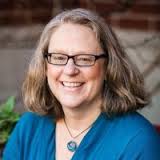-
Featured Expert: Diana Clegg Shares Three Crucial Steps for Moving Your Non-Profit Forward
- Posted on December 6, 2016
- by Kelly Luchtman
- in Uncategorized
- Comments Off on Featured Expert: Diana Clegg Shares Three Crucial Steps for Moving Your Non-Profit Forward
 Diana Clegg has over 20 years of organizational development experience with non-profits. Currently she is the Executive Director of Erasing the Distance, an organization that uses theatre to promote awareness and compassion around mental health issues. You can find more information on Erasing the Distance here.
Diana Clegg has over 20 years of organizational development experience with non-profits. Currently she is the Executive Director of Erasing the Distance, an organization that uses theatre to promote awareness and compassion around mental health issues. You can find more information on Erasing the Distance here.
I was a board member of ETD for 3 years from 2011-2014. In 2012, we had hit the wall that all small non-profits hit, which is “What is the most important thing to do next?” We needed more funding; we needed more board members; we needed every kind of staff member but could only afford half of one; we needed a space; we needed to expand our programming, and we were paralyzed because we didn’t know which step to take first.
We decided to hire an operations manager, and boy did we get lucky. Diana came in and firmly but gently laid out our marching orders, and we all relaxed. When I started on the board, ETD had a budget of about $125,000 and had reached about 10,000 audience members. Today, the budget is closer to $275,000 and they have reached 55,000 audience members. I believe that is due largely to Diana.
If this sounds familiar to you, read on. Below are Diana’s top 3 steps to moving from paralysis to progress.
Step 1: Diversify Your Funding
The first thing Diana did was analyze our fundraising and make a plan to diversify the sources of our income. “I know a lot of social service agencies have a lot of grant funding from the government, so when we have problems like we are having now with the Illinois budget, that really impacts their work,” says Diana. At Erasing the Distance, we had a very generous benefactor who was fronting a large percentage of our budget, and Diana strategically widened our funding sources by approaching corporations and foundations.
Step 2: Create Systems
At small non-profits, many of the tasks are handled by one person who follows their own system. If that person is unavailable, nobody else can cover them, and important things fall through the cracks. So, the second thing Diana did at Erasing the Distance was work with the founder and part time staff to get everything out of their heads and written down. Then she created scalable and trainable systems, such as tracking expenses, that all staff members could learn. According to Diana, “That really helps with growing an organization because then as you gradually bring new people on, you have a better sense of what’s needed and how to bring them in and get them trained.”
Step 3: Get An Office
For many years ETD operated virtually. Each staff member worked out of their home, and they met once a week in person. Although that practice kept overhead low, it wasn’t efficient and was actually hampering growth. As soon as she could, Diana got a central office. “It was a big commitment to making that regular payment, but the payoff was huge, on so many levels. We have relationships now with people, actors coming in to rehearse, having the staff here together. It’s 100% better,” she says. The solution for ETD was office sharing. They shared with another small non-profit, which not only eased the fear and cost, but also built peer relationships.
It’s easy to get overwhelmed when you need to change EVERYTHING. Hopefully these three steps will help you strategically and steadily build your infrastructure for growth.
If you enjoyed this article please consider sharing it!
Listen to our Customers
“I think it is especially hard to understand what we do, capture it through interviews, and distill it down to 2 minutes, and you hit a home run.”
Ed Jacob as CEO, North Side Community Federal Credit Union May 4, 2015
“The video was very powerful. I had several people tell me how they were moved to tears by it-including [a featured] artist!”
Michelle T. Boone (as Arts & Culture Program Officer at The Joyce Foundation) Commissioner, City of Chicago Department of Cultural Affairs and Special Events May 4, 2015
“It’s all about telling the story and that is what you did so well. The artists had nothing but glowing words about your work and of course, I am thrilled.”
Sydney Sidwell (as Arts & Culture Program Officer at The Joyce Foundation) Associate Director, Ingenuity Incorporated May 4, 2015
“How can I ever thank you? You captured the essence of what ASLF is all about.”
Dr. Sandy Goldberg Founder and Chairman, A Silver Lining Foundation May 4, 2015
Keep in touch with us!
 Please wait...
Please wait...




